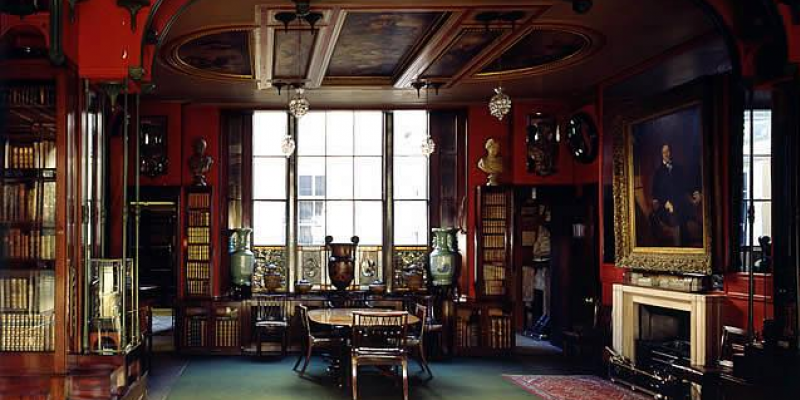Sir John Soane's Museum ★☆☆

Fantastic, small, bit-of-everything museum—ancient Roman and Egyptian sculptures; paintings by Turner, Reynolds, and Hogarth; architectural remnants and Cantonese furniture—all crammed into the formerly private home of an eclectic collector
A few years before his death in 1837, architect and collector Sir John Soane arranged for an act of Parliament to preserve his house as a free public museum.
It is one of those fantastic formerly private collections conserving, well, a bit of everything: ancient sculpture, architectural remnants, Cantonese furniture, and paintings by Turner, Reynolds, and Hogarth (including the original A Rake's Progress series, in a small room designed to display far more paintings than its size would seem to allow by hanging them on ingenious movable walls).
In the cluttered basement is the Egyptian sarcophagus of Seti I, which Soane delighted in having snatched from right under the British Museum's collective nose after they, not realizing what it was, passed on buying it when it arrived in England and the museum was were offered first dibs.
Everything is exactly as Soane left it, from the parlor’s trompe-l’oeil ceiling “arbor,” to the cardinal directions stenciled above room doorways, to the brilliant orange-red walls—supposedly matched from an ancient paint chip Soane pilfered in Pompeii.
Tips
It only takes about 30–45 minutes inside; though I'd budget at least an hour for waiting (and for having fun reading the stories behind all the pieces in the collection; definitely buy the little history booklet available at the front door).
They only let a handful of people at a time inside—and since it is free, the museum gets more visitors than it might otherwise.
In other words, bring something to read, as you may have to stand out on the sidewalk in a short line for a little while upon arrival.














